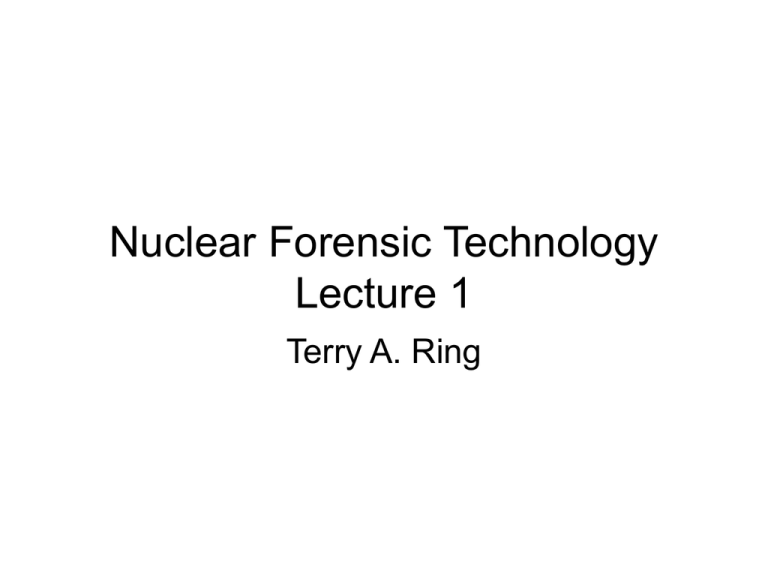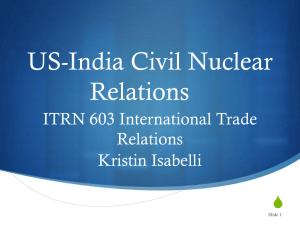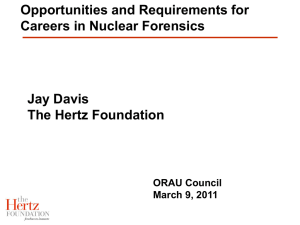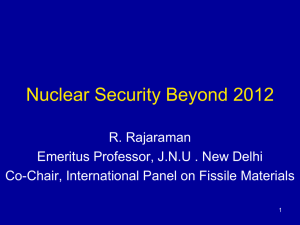Lecture 1
advertisement

Nuclear Forensic Technology Lecture 1 Terry A. Ring What is Forensics? • scientific tests or techniques used in the investigation of crimes. • the use of science and technology to investigate and establish facts in criminal or civil courts of law. • relating to or dealing with the application of scientific knowledge to legal problems • Sherlock Holms • CSI What is nuclear Forensics? • Nuclear forensics is the technical means by which nuclear materials, whether intercepted intact or retrieved from post-explosion debris, are characterized (as to composition, physical condition, age, provenance, history) and interpreted (as to provenance, industrial history, and implications for nuclear device design). This characterization and interpretation results from field work to obtain representative samples of the device materials, laboratory analyses, computer modeling, and comparison with databases that contain empirical data from previous analyses of materials samples or that may be the result of numerical simulations of device performance or both. AAAS Definition What is Nuclear Forensics? • Nuclear forensics is the analysis of intercepted illicit nuclear or radioactive material and any associated material to provide evidence for nuclear attribution. The goal of nuclear analysis is to identify forensic indicators in interdicted nuclear and radiological samples or the surrounding environment, e.g. the container or transport vehicle. These indicators arise from known relationships between material characteristics and process history. Thus, nuclear forensic analysis includes the characterization of the material and correlation with its production history. IAEA Do Not Confuse NF with Nuclear Safeguards • Nuclear safeguards are measures to verify that countries comply with their international obligations not to use nuclear materials for nuclear explosives. Since it is the country itself that is regarded as the potential diverter of nuclear material, confidence about the absence of diversion is provided by external, i.e. international, verification. Global recognition of the need for such verification is reflected in the Treaty on the NonProliferation of Nuclear Weapons (the NPT). 180 Nations have now signed agreeing that the International Atomic Energy Agency (the IAEA) must apply safeguards on all their nuclear material. Only India, Israel, Pakistan, and North Korea have not signed the treaty. What is missing in these definitions? Terrorist (Nuclear) Event ER Trans Hot Zone NF Zones • Hot Zone – In protective gear. Photos of evidence. Identify what should be sampled and preserved for Forensics purposes. Move them to Warm Zone for further analysis • Warm Zone – Samples are run through field analysis using instruments. Photos taken as samples are broken down and bagged for laboratory analysis. Chain of custody system established. Samples packaged for transportation to labs. • Cold Zone – Sample transportation to accredited FBI labs. Tools of Nuclear Forensics • Hot Zone – Geiger Counter • Where is radioactive contamination? • Warm Zone – Gamma Spectrometer • Is sample hot and dangerous? • Helps establish what container is required for transportation to Lab. • Nuclear Materials Chemical Analysis at NF Lab

![The Politics of Protest [week 3]](http://s2.studylib.net/store/data/005229111_1-9491ac8e8d24cc184a2c9020ba192c97-300x300.png)








